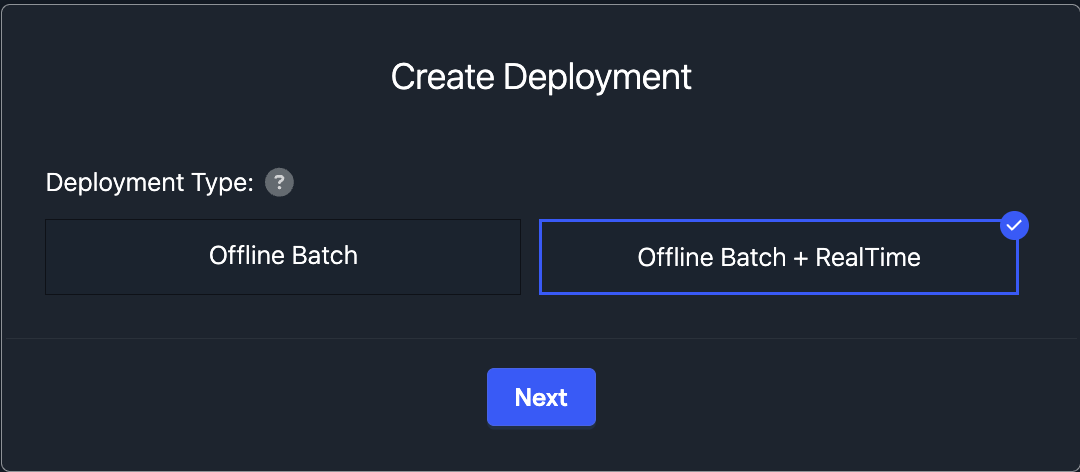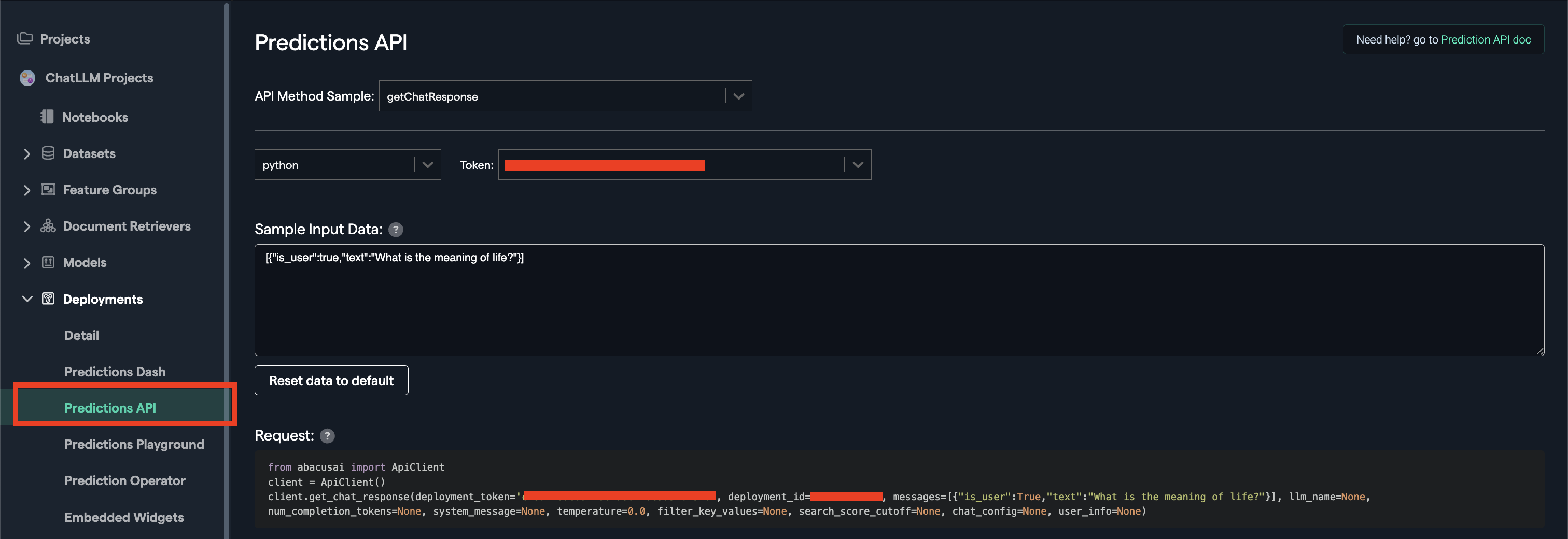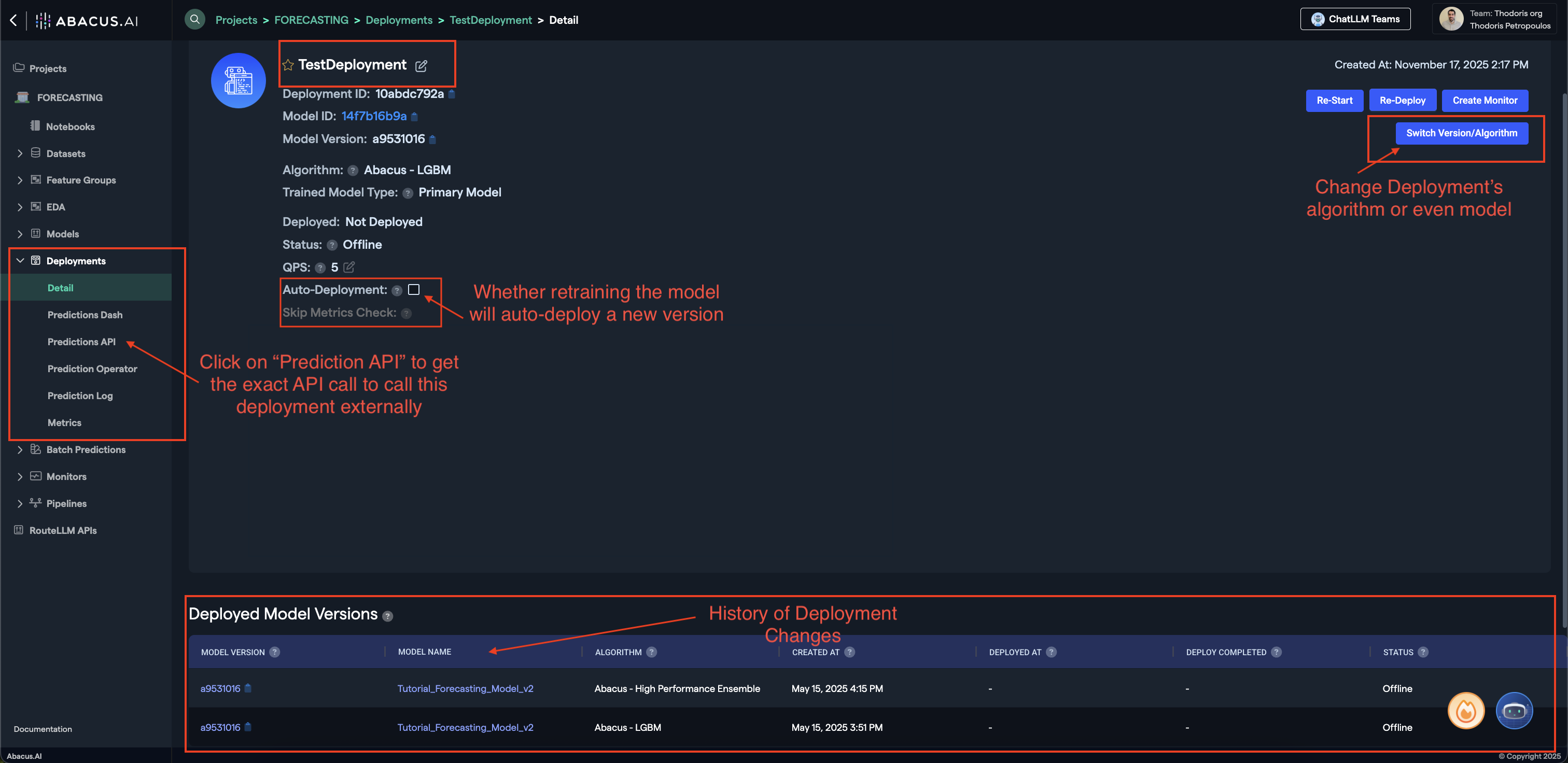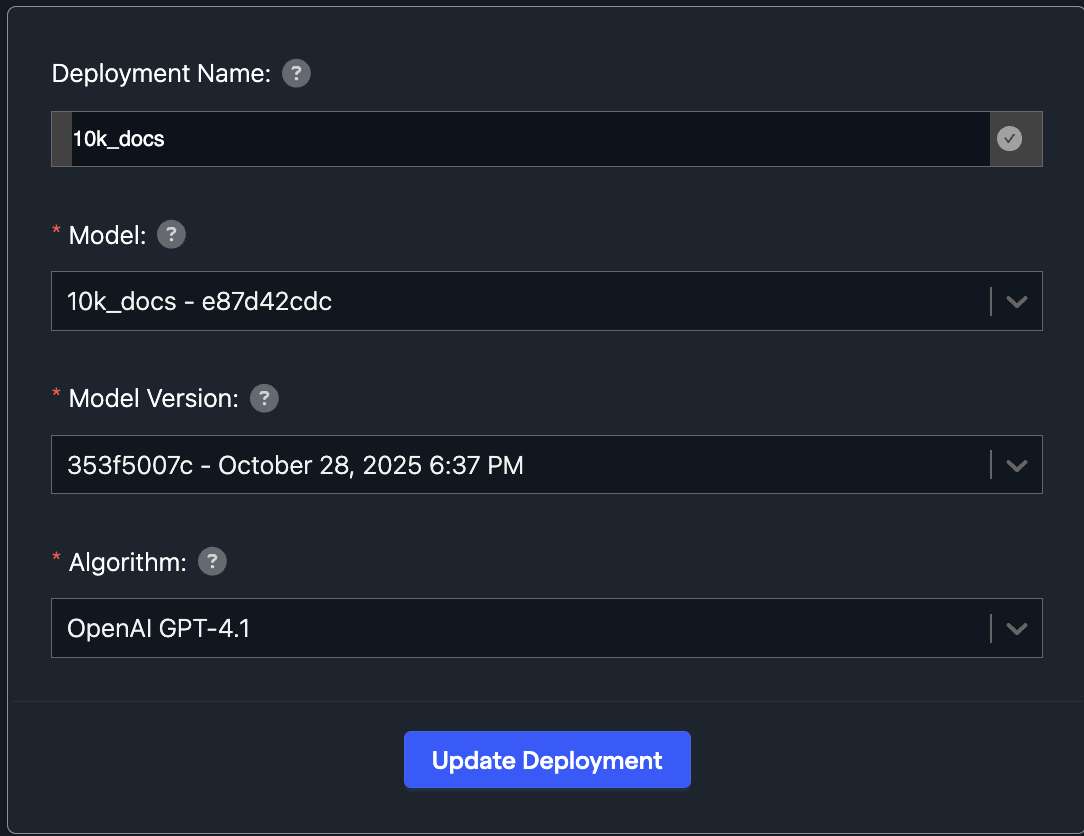Deploying Models
Overview
After building a model in Abacus.AI, the next step is to deploy it. Deploying a model makes it available for predictions and enables integration into your applications, regardless of the use case.
What You'll Learn
In this guide, you will learn how to:
- Deploy a model
- Revert to a previous version or change the model completely
Deploying Your Model
To deploy a model, navigate to the Model Training Page and click the Deploy Model button.


Deployment Types
When deploying, you'll need to choose between two deployment types:
- Offline Deployment: Suitable for models that don't require real-time predictions. Ideal for ML models that run on input data using scheduled cron jobs.
- Online Deployment: Designed for models requiring real-time predictions, such as GenAI models or ML models integrated into live applications.
Monitoring Your Deployment
For both deployment types, you can monitor the deployment status and view logs directly from the Abacus.AI platform.
Once deployed, you can view the deployment status from the deployment page:

Accessing the Prediction API
To integrate your deployment externally, click on Prediction API to view the API documentation and calling instructions.

Key Deployment Settings
Here is an overview of all important settings:

Auto Deployment Toggle
- ON: When the model connected to this deployment is retrained, the deployment automatically updates to use the new model version.
- OFF: The deployment continues using the current model version even after retraining. You must explicitly update the deployment to point to the new model version.
Switching Model Versions
You can select which model or version to deploy using the Switch Version Algorithm button:

Understanding Deployments and Models
Key Concepts
- Deployment-Model Relationship: Each deployment is connected to a particular model version, but you can change the version or the model itself at any point in time.
- Multiple Deployments: Each model can have multiple deployments, but each deployment is only connected to a single model version.
- Separation: Deployments are completely separated from the model, providing flexibility in version management and deployment strategies.